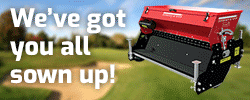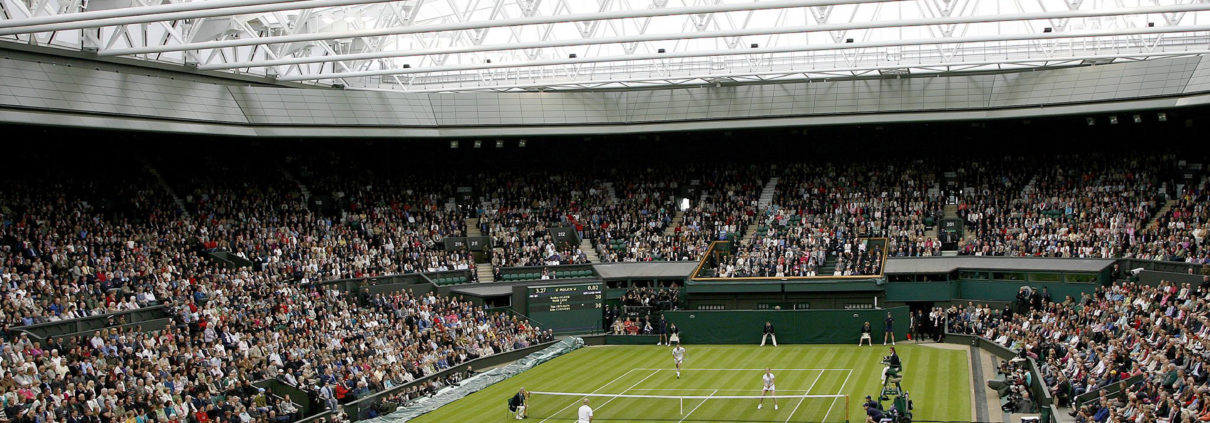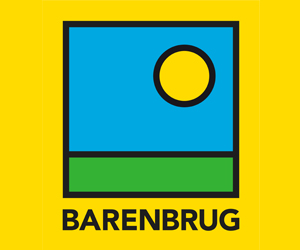How Turf Changed Tennis
How Turf Changed Tennis: The STRI’s Mark Ferguson explains how an improvement in the grass deployed on tennis courts changed the way in which the game was played, writes Scott MacCallum.
Remember back to the Wimbledons of the 70s and 80s. There was little British involvement beyond the second round; in the second week the courts looked like a yellow massive “T” surrounded by varying shades of green; and, for the men at least, a rally of over five shots was something of a novelty.
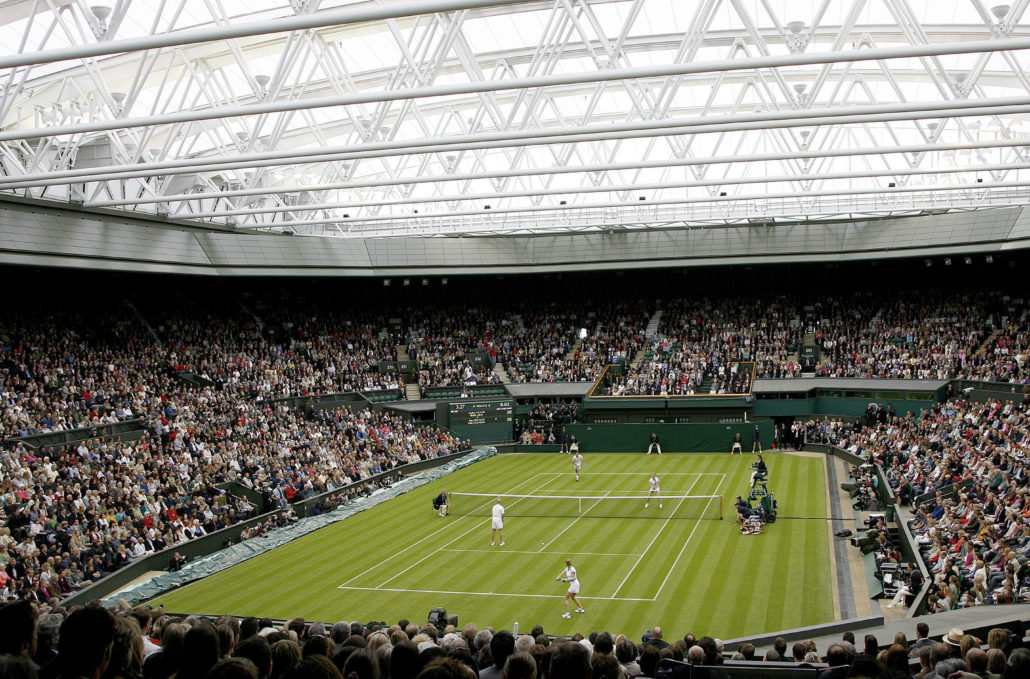
It was the days of Ilie Nastase, Bjorn Borg, Jimmy Connors, Roscoe Tanner, and the man with the best name in the sport – Vitas Gerulaitis. It was all white balls and wooden racquets. It was also the days of the “You cannot be serious!” and “Chalk dust blew up!” moments, and the bad bounce.
To a significant degree it was the bad bounces which forced players to adopt a serve and volley approach, rather than remain at the back of the court trying to work openings but risk a low bounce ruining all the great lead up work. Racquet technology improved dramatically in the 80s and led to the grass court game becoming dominated by big servers. This meant that the game was dominated by short rallies and became predictable.
That was all to change in the 90s.
The STRI had always been involved with Wimbledon on an advisory basis, but it was in the early 90s that they became more heavily involved with the All England Club and The Championships.
As part of that a whole raft of research, surveys and botanical assessments of the courts were carried out – a programme which continues to this day.
“The most important trial was the ‘Grasses for Tennis’ trial which was set up in 1993,” explained Mark Ferguson, the STRI’s Research Manager.
“What quickly became apparent was that there were better grasses out there which could be used on the courts.
That wasn’t the fault of anyone as no research had been done prior to that and new breeding technology had only recently brought in new varieties.”
The new cultivars of perennial ryegrass provided a much better surface. More consistent than the old seed mixtures that had been based on golf course grasses such as bent and fescues, which quickly became invaded with annual meadow-grass.
“At the start of The Championships, the surface had a low bounce due to the cushioning effect of the poa, but as it wore down (to avoid using out twice?) whole plants kicked out, leaving bare patches which led to unusually high bounces. This encouraged players to keep rallies short.

With the arrival of the new rye grasses the game changed, the courts became much more consistent and players were confident enough to play from the back of courts which performed a bit more like hard courts, albeit the ball came through much more quickly.” explained Mark, who has been STRI’s Mr Wimbledon for 13 years.
“The work that has been done on grasses has played a big part in the way the game has been played.”
The current Wimbledon mixture is supplied by Limagrain and has been used for the last 10 years. It comes from three cultivars – Melbourne, Malibu and Venice.
“Breeding has hit a bit of a ceiling, improvements are now more marginal. Ryegrasses have become so good now that it is difficult to genetically engineer something which is better. There are some coming through and there are some excellent companies out there which have had great success in trials and they are tested at Wimbledon as part of the trial work.”
As part of Mark’s wider role, he is involved with the Lawn Tennis Association, ensuring that all the venues used by the LTA receive support and advice.
This is important as a few years ago the future of grass court tennis was in some doubt particularly with the US Open moving away from grass courts in 1975 and the Australian Open following in 1988.
“Funnily enough I’ve just finished writing an article called the ‘The Rise and Fall and Rise Again of Grass Courts’.
When tennis became a sport everyone played on grass. Clay became an alternative in Europe and then in the 70s and 80s we got the hard courts as the game became much more fashionable. These courts were much more maintenance friendly, although I only recently learned that the US Open courts are resurfaced every year,” explained Mark, adding that the ITF now recognise 10 official surfaces but there are hundreds of variants within them.
Mark spends time visiting lawn tennis clubs up and down the country offering advice and support at places which don’t have large budgets – perhaps a one-man band looking after the courts. It is part of the LTA’s use of the revenue – £40 million a year is the latest quoted figure – which comes from The Championships.
“They can’t afford to do everything they would like, but they are doing their best to prepare a good surface and we can really help these people.
“There has to be a grass court legacy within the UK for Wimbledon to survive as a grass court tournament. There has to be a grass court season so that players can become accustomed to the grass each year and that Wimbledon doesn’t become a grass court tournament in isolation,” explained Mark.
Today’s Wimbledon is a massive sporting event – Mark believes that it is the biggest annual sporting event in the world – and Mark and his four strong team attend from the week in advance of The Championships each year.

They take daily measurements on each court, including practice courts and the qualifying courts at the Bank of England Sports Club, using the famous old Clegg impact hammer, to measure surface hardness. Soil moisture readings, ball bounce, chlorophyll index and live grass cover is also measured.
“To measure live grass cover we go to the same eight areas on each court, every day and take a count of live grass, that’s 800 spot identifications per court, per day.”
All measurements are processed and made available to Neil Stubley to direct specific management on Championships and practice courts. If, for example, a player questions the playing quality of a court, the measurements can prove that surface characteristics are consistent with other courts and other Championships.
“We have readings for every court going back to the 1990s so we can demonstrate objectively how a court is performing compared to previous years.”
Mark is a friendly, interesting and open interviewee, but there was one question which elicited a more cautious response than the others.
“Can we say now that the courts are measurably better than they were a number of years ago?” That was the question.
“I hate to use the phrase ‘better than ever’ as it is a real hostage to fortune and can become a stick to beat you with. We aim for surface characteristics to fall within certain parameters, but there are a number of factors that can influence how courts play, the weather is an obvious one, also hours of play, type of play etc”.
“Last year for example the two men’s semi-finals went to five hours 15 minutes (Djokavic-Nadal) and six hours 36 minutes (Anderson-Isner) and that put so much wear into Centre Court for the final two days. A year before there were much shorter semis and the wear would have been much less. However, Centre Court still played great for the final weekend.”
By the same token the Centre Court roof has not had a real impact on the day-to-day condition of the surface, but in another way, it does make a difference.
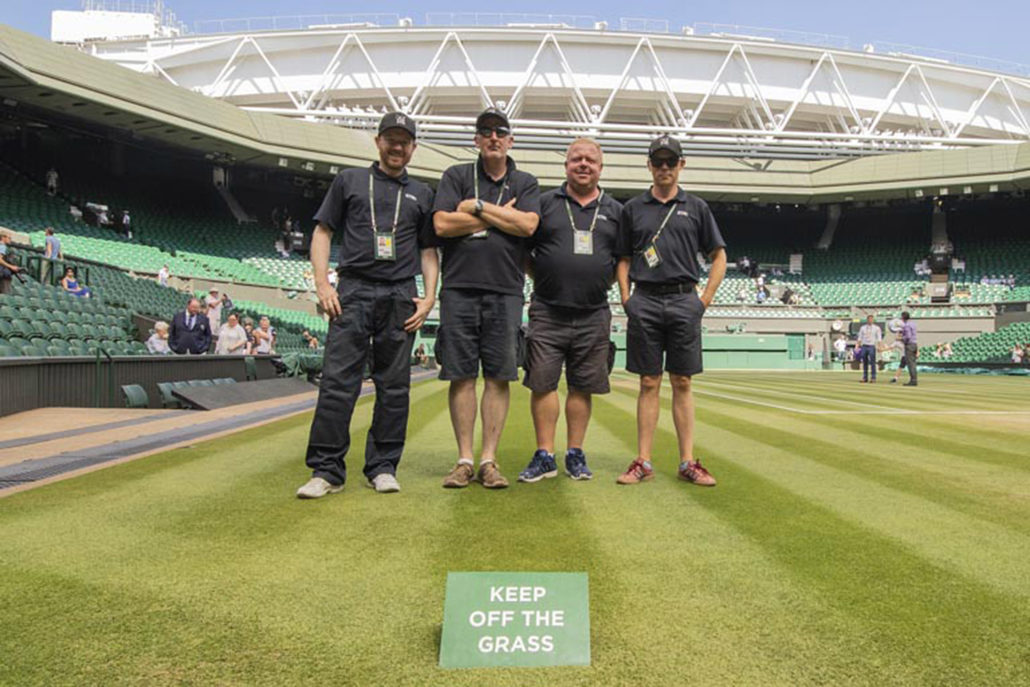
“The roof on Centre Court is at the north end so it doesn’t impact in terms of shade but what the roof does bring is continuous play when the rain comes. Live TV want play all the time so there is a temptation to overuse the court, and it needs to still be in good condition on day 13. Other courts are brought out of play as the fortnight progresses and there are fewer matches to play.”
With the No.1 Court roof coming into use at this year’s Championships the Centre Court workload can be managed a little more easily.
Mark is seen very much as part of the Wimbledon team, travelling down from his base in Bingley once a month throughout the year and more regularly as The Championships approach and he works very closely with Neil and his team.
Mark is immersed in tennis and doing what he can to ensure that the traditions and beauty of the grass court game are maintained, but he certainly doesn’t see it as a chore.
“For me it’s not just another job. It is an absolute pleasure and a privilege to be involved with Wimbledon. It’s an honour to be down there each year and to have an input in a positive way on what goes on.”
It’s fair to say that with Mark’s expertise and the talents of Neil Stubley and his team the future of Wimbledon is secure for the long, long term.
